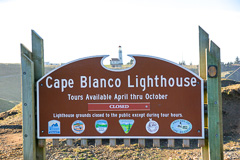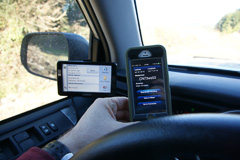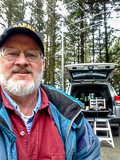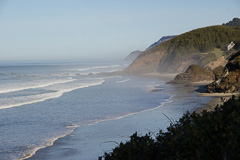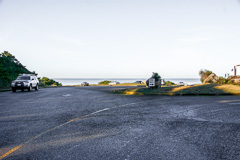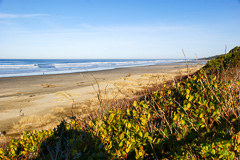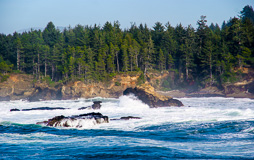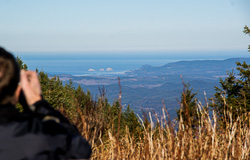Jan 18 2014
January 2014 VHF Contest
text
I operated as Rover in the Oregon coast grids of CN72, CN73, CN74 and CN75 on Jan 18-19 using 50, 144, 220 and 432 MHz.
This was pack roving (if you can call “two” a pack) with Rod WE7X /R. (ARRL rules allow up to 100 contacts with a single station.) It was great to have help wrangling a big antenna setup in the remote coastal area. Thank goodness Rod was along or I would've had great difficulty raising the antenna system. Plus, we circled a grid corner to activate CN84 and CN85.
I made about 100 contacts and 62 of them were with WE7X /R. My longest contact was 325 miles from Cape Blanco State Park CN72 to Paul K7CW in Seattle CN87.
Weather: Conditions were excellent for January but still cold: sunny days in the 40s and nights in the 30s with steady coastal breezes. But this is actually quite chilly for operating outdoors at the back of the truck and I felt like a popsicle for two days; I can't imagine this trip in severe winter weather.
Distance: I love driving these resort destinations in January when traffic is so light. The total trip was 1042 miles from Seattle and back over five days and it went smoothly, averaging 1.9 contacts per gallon.
New gear: A new 6m5x and new aluminum mast worked well but setup and teardown each took an hour which cuts into operating time. The 6m5x is a big cannon for pummeling propagation into submission, but any antenna with an 18' boom doesn't make a nimble rover setup. I need to tune the setup procedures for efficiency and one-man assembly; I also need to re-think the mast as a raise-up design instead of tilt-up. A new battery and powergate worked like a charm in the back of the truck.

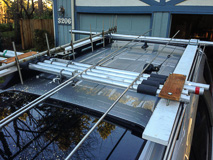
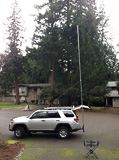
Murphy: Our 222 FM radios only intermittently communicated and we missed a bunch of these grid corner contacts. My laptop wouldn't power up so I used paper logs instead. The computer problems would have cancelled my FSK441 meteor scatter, if I had been ready for it. The mast design and construction took all of my prep time so I wasn't prepared for meteor scatter anyway. This trip was the first time all antennas had been stacked on the mast together and the first time the 6m5x was on the air. The 432 MHz 11-element yagi had tested okay on the analyzer but didn’t load up properly; I never did actually use it on this trip. I could have used another week to get ready. Or two. Maybe three.
Locations: My other hobby is recording all the places I've visited and publishing them online. There was no shortage of operating spots – the Oregon coast is an endless series of spectacular state parks, viewpoints, beach access points, RV parks and hotels. Numerous updates were made to the website for rover locations across grids CN72, CN73, CN74, CN75 and CN85.
Next: The plan was to activate two grids/day from semi-rare locations. This turned out to be pretty ambitious for the time required for this equipment's setup, teardown and driving. Next time, I want to try a one grid/day trip and have more on-the-air time and do meteor scatter ops.
My home is in Sammamish (near Seattle) but for sake of log entry, my contest entry section is Oregon because that's where all the contacts were made. Unfortunately this trip was too remote to contribute to the PNWVHFS club score.
Claimed score: (124 QSO points) x (6 grids activated + 25 grids worked) = 3,844 points total
